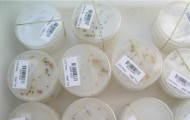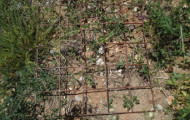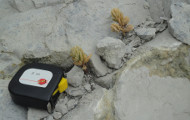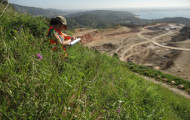The Project
A close and long-lasting collaboration began in 1998, between Secil and the Faculty of Sciences (University of Lisbon), with the primary goal of increasing the restoration success at Secil-Outão. The location of this quarry within a Natural Park imposes specific limitations and priorities to restoration actions, such as the use of local species in revegetation.
With high regeneration capacity and suitable morphological and physiological adaptations to low resource levels and severe climatic conditions, the local Mediterranean-type flora is expected to play a key role in the recovery of the degraded areas and in their progressive integration in the surrounding ecosystem. Based on ecological science, and using a comprehensive approach of the composition, structure and function of the vegetation communities, the tasks of this project are designed to understand and overcome constraints to restoration at this quarry.
Consistent with internationally accepted ecological restoration principles, this collaborative work is based on continued evaluation, experimentation and implementation, aiming at:
- monitoring and evaluating the success of previous restoration actions, namely in terms of vegetation dynamics and resilience to disturbances;
- increasing knowledge about native plant species (already used or potentially suitable ones), namely the conditions for their establishment and growth, their ability to thrive in this harsh environment, and their role in ecosystem development;
- improving seed conservation and plant production for revegetation;
- testing new approaches and practices, both at the soil and plant level, namely to overcome abiotic constraints (e.g. water stress…) or biotic threats (e.g. control of invasive species);
- evaluating the results of current practices and improving (or discarding) them, in order to increase the cost-effectiveness of all interventions and the long-term sustainability of the new plant community and, consequently, of the whole ecosystem.
Methodological tools include, among others, floristic surveys, assessment of substrate characteristics and determination of plant survival and growth.







